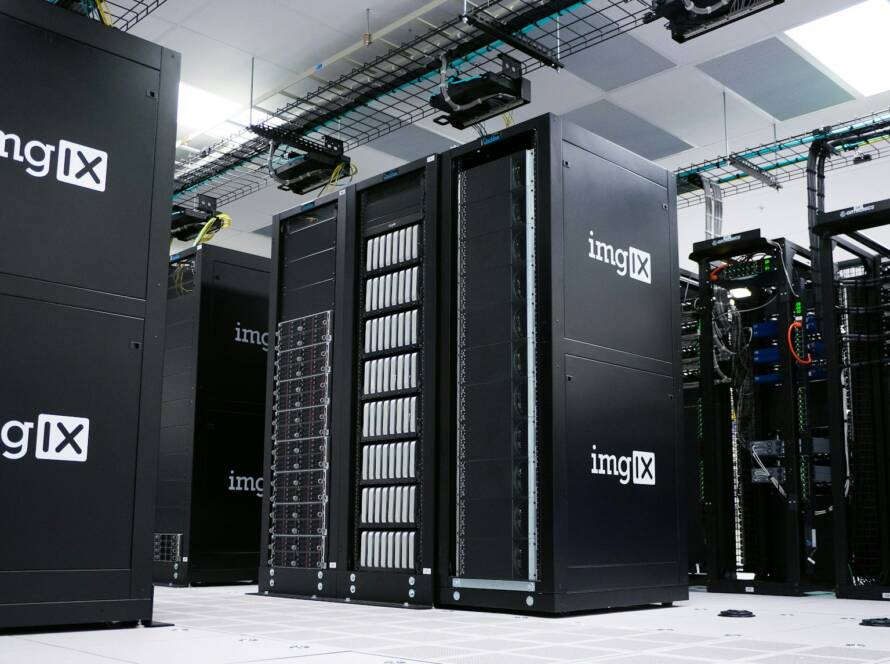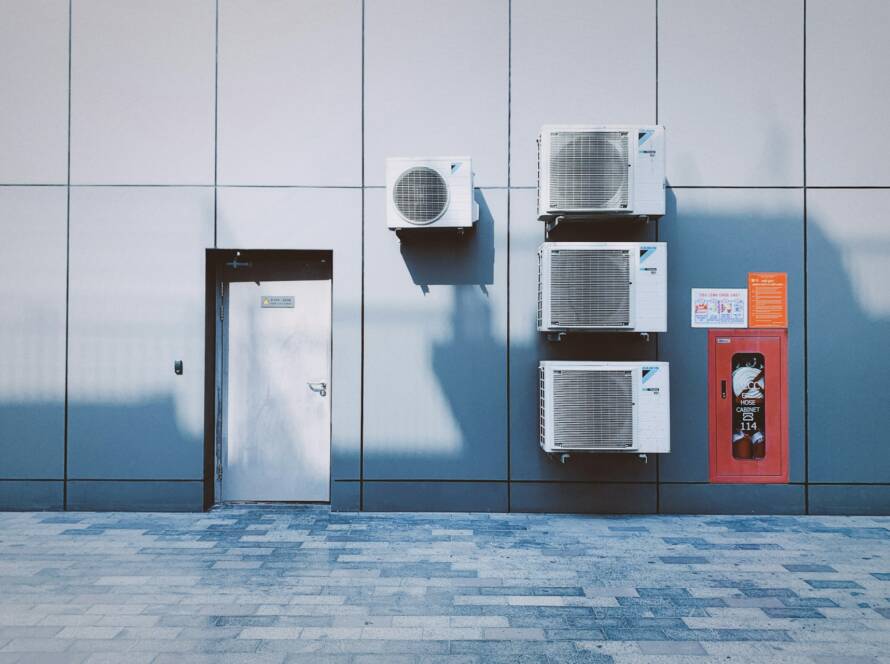You manage a warehouse operation storing millions of pounds worth of products. Your energy bills keep climbing. You’re constantly dealing with damaged inventory. Workers complain about uncomfortable conditions. What if these problems all have the same root cause – poor climate control?
Warehouses face unique challenges that make climate control far more complex than typical buildings. Getting it wrong doesn’t just affect comfort – it destroys your bottom line.
The Hidden Costs of Climate Control Problems
When your warehouse can’t maintain proper temperature and humidity, the financial impact hits multiple areas:
Product damage losses. Electronics malfunction in high humidity. Chocolate melts when temperatures rise. Medicines lose effectiveness in heat. Cardboard packaging collapses when moisture gets in. A single climate control failure can destroy thousands of pounds worth of inventory overnight.
Massive energy waste. Warehouses are energy-intensive operations. Poor climate control can waste 30-40% of your energy budget. For a typical large warehouse, that’s £20,000-£50,000 in unnecessary costs annually.
Worker productivity drops. Uncomfortable workers move slower, make more mistakes, and take more breaks. In extreme temperatures, they can suffer heat exhaustion or become too cold to handle products safely.
Insurance claims increase. Damaged products lead to insurance claims, higher premiums, and potential coverage disputes. Some insurers may even refuse coverage if you can’t demonstrate proper climate control.
Regulatory compliance issues. Warehouses storing food, pharmaceuticals, or other regulated products must maintain specific conditions. Violations can result in fines, shutdowns, or loss of operating licenses.
Why Warehouse Climate Control is So Challenging
Your warehouse faces unique obstacles that make climate control far more difficult than managing a typical building:
Massive scale. A typical warehouse might be 100,000 to 1,000,000 square feet with ceilings 20-40 feet high. That’s like trying to climate-control 20 to 200 houses connected together. Different areas inevitably have different conditions.
Constant disruption. Loading docks open and close continuously as trucks arrive and leave. Each opening brings in outside air – hot in summer, cold in winter, humid when it’s raining. This constantly disrupts your internal climate.
Heat generation. Forklifts, conveyor systems, computers, and thousands of lights all generate heat. In a large warehouse, this equipment produces as much heat as hundreds of space heaters running constantly.
Mixed storage needs. You might store frozen goods (requiring below 0°F), fresh produce (needing 35-40°F), and dry goods (requiring room temperature) all in the same facility. Managing these different zones is incredibly complex.
Seasonal variation. What works in spring fails in summer or winter. Your systems need to adapt to changing outdoor conditions while maintaining perfect indoor environments.
The Business Impact of Poor Climate Control
The summer meltdown. A warehouse storing chocolate and confectionery lost £85,000 worth of product when their cooling system couldn’t keep up during a heat wave. Insurance covered only 60% of the loss, and they lost a major client due to delivery delays.
The humidity disaster. An electronics warehouse experienced 40% humidity instead of the required 30%. Over six months, this caused gradual corrosion damage to components worth £200,000. The problem went unnoticed until customers started returning defective products.
The energy drain. A furniture warehouse discovered their climate control system was fighting itself – heating and cooling systems running simultaneously. This wasted £30,000 annually in energy costs before they identified the problem.
The worker safety issue. A warehouse faced £50,000 in workers’ compensation claims after several employees suffered heat exhaustion during a busy summer period when climate control couldn’t keep up.
The Limitations of Traditional Climate Control
Most warehouses still use basic systems that weren’t designed for large-scale operations:
Single-zone control treats your entire warehouse as one space, even though different areas have vastly different needs. The loading dock might be sweltering while the storage area is too cold.
Manual adjustments require staff to walk around checking conditions and making changes. This is time-consuming and often misses problems until damage has occurred.
Reactive maintenance only addresses problems after equipment fails or conditions become obviously wrong. By then, you’re dealing with emergency repairs and potential product damage.
Basic scheduling runs systems on fixed schedules regardless of actual conditions, wasting energy when full power isn’t needed and failing to provide adequate conditioning when demand is high.
Smart Climate Control: A Business Solution
Companies like SmartSenser have developed systems that solve these problems automatically. Think of it as having a team of climate experts monitoring every corner of your warehouse 24/7.
Zone-based monitoring treats different areas of your warehouse independently. Loading docks, storage areas, and frozen sections can all have different settings optimized for their specific needs.
Real-time optimization continuously monitors temperature, humidity, and air quality throughout your facility, automatically adjusting systems to maintain perfect conditions while minimizing energy use.
Predictive intelligence learns your warehouse’s patterns and prevents problems before they occur. The system might notice that temperatures always spike when certain trucks arrive and pre-cool those areas.
Integration with operations connects with your warehouse management system to know when areas will be busy, when doors will open frequently, or when different product types are being stored.
The Business Case for Smart Climate Control
Immediate cost savings. Smart systems typically reduce energy consumption by 20-40%. For a large warehouse, that’s £15,000-£40,000 in annual savings.
Prevented product damage. The cost of one major climate-related loss often exceeds the entire investment in smart monitoring. Prevention is always cheaper than replacement.
Improved worker productivity. Comfortable workers are more productive, make fewer mistakes, and have lower injury rates. This improves your overall operational efficiency.
Reduced maintenance costs. Early detection of equipment problems allows scheduled maintenance instead of emergency repairs, saving 40-60% on maintenance expenses.
Insurance benefits. Some insurers offer discounts for warehouses with professional climate monitoring, recognizing their lower risk profiles.
Regulatory compliance. Automated monitoring and reporting helps maintain required conditions and provides documentation for inspections.
How Smart Systems Work in Practice
Comprehensive sensor networks place wireless monitors throughout your warehouse at multiple heights and locations. These provide complete visibility into conditions everywhere in your facility.
Intelligent control systems analyze all sensor data and automatically adjust heating, cooling, ventilation, and dehumidification equipment to maintain optimal conditions in each zone.
Weather integration connects to weather forecasts and automatically prepares for changing outdoor conditions, pre-cooling before hot days or adjusting humidity control before rainy periods.
Mobile monitoring lets you check conditions throughout your facility from your smartphone, receiving alerts when problems develop and making adjustments remotely.
Equipment coordination makes multiple pieces of climate control equipment work together efficiently instead of fighting against each other.
Real Warehouse Success Stories
The pharmaceutical distributor. A medical supply warehouse installed smart climate control and achieved 35% energy savings while maintaining perfect conditions for temperature-sensitive medicines. The system paid for itself in 18 months.
The food distribution center. A frozen food warehouse prevented £150,000 in product loss when smart monitoring detected a gradual temperature rise and automatically brought backup cooling online before products thawed.
The electronics facility. A consumer electronics warehouse reduced humidity-related damage by 90% after installing smart monitoring. The system’s precise humidity control prevented the corrosion problems that had previously cost them £80,000 annually.
The e-commerce fulfillment center. An online retailer’s warehouse improved worker productivity by 15% after smart climate control eliminated the hot and cold spots that had made certain areas uncomfortable to work in.
Implementation: Easier Than You Think
Assessment phase. SmartSenser evaluates your current systems and warehouse layout to design an optimal monitoring solution tailored to your specific needs.
Phased installation. Start with your most critical areas or problem zones, then expand based on results and budget. Wireless sensors install quickly without disrupting operations.
Integration with existing systems. Smart monitoring works with your current heating, cooling, and ventilation equipment – no need to replace functional systems.
Staff training. Your team learns to use the monitoring dashboard and respond to alerts. The system is designed to be intuitive for non-technical users.
Ongoing support. Professional monitoring services provide continuous oversight and technical support to ensure optimal performance.
Immediate Steps You Can Take
While planning for smart climate control, you can improve conditions immediately:
- Install multiple monitoring points throughout your warehouse at different heights and locations
- Implement basic zone control to manage different areas based on their specific needs
- Improve insulation and sealing around doors, windows, and walls
- Optimize equipment scheduling based on occupancy and operational patterns
- Train staff on climate awareness and proper door management procedures
Your Next Steps
Poor warehouse climate control is costing you money through damaged products, wasted energy, and reduced productivity. Every day without proper monitoring puts your inventory and operations at risk.
Evaluate your current situation:
- How much do you spend on energy annually?
- What does product damage cost your operation?
- How often do you deal with climate-related problems?
Calculate the opportunity:
- What would 20-40% energy savings mean for your budget?
- How much could you save by preventing product damage?
- What’s the value of improved worker productivity?
Consider smart monitoring:
- Compare system costs to your current energy and damage expenses
- Look for solutions that integrate with existing equipment
- Choose providers with warehouse experience and 24/7 support
Contact SmartSenser:
- Get a customized assessment of your facility
- Learn about implementation options and costs
- Discuss how monitoring addresses your specific challenges
The Bottom Line
Smart warehouse climate control isn’t just about maintaining comfortable conditions – it’s about protecting your inventory, controlling costs, and improving operational efficiency. The technology exists today to solve most warehouse climate problems automatically while saving money.
The investment in smart monitoring typically pays for itself within 18-24 months through energy savings alone. Add in prevented product damage, improved productivity, and reduced maintenance costs, and the return on investment becomes compelling.
Your warehouse stores millions of pounds worth of products. Your energy bills represent a significant operational expense. Your workers deserve safe, comfortable conditions. Smart climate control protects all three.
Don’t let poor climate control continue draining your profits and threatening your inventory. The solutions are available, proven, and more affordable than the cost of climate-related losses.
The question isn’t whether you can afford to upgrade your climate control systems. The question is whether you can afford not to.


